Here Are Some Frequently Asked Questions & Answers..
What Does A Roof Do?
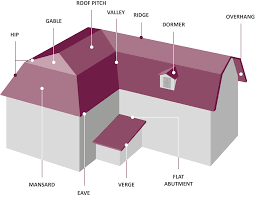 By definition a roof is the outer layer of a house or shelters upper covering. Roofs come in all shapes and sizes depending on what it is they are covering.
By definition a roof is the outer layer of a house or shelters upper covering. Roofs come in all shapes and sizes depending on what it is they are covering.
A roofs basic purpose is to protect and secure occupants of whatever the roof is attached to. And that is what roofers Bournemouth make sure of.
For example a car roof protects drivers from the rain and other weather conditions that would make it harder for the driver to actually drive. This is why you won’t ever see people with convertibles driving with the roof down when the weather outside is extreme.
Roofs serve other purposes too such as housing gutters and different types of roof also serve different purposes depending on the specific needs of the building they are attached to.
What’s The Difference Between A Roof & A Ceiling?
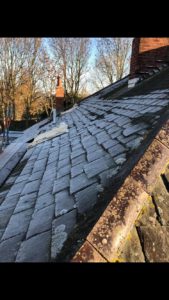 A roof is the outer upper layer of a house. Car. Or shelter. A roof has to be more rugged than it is attractive. This is why even though some roofs can be aesthetically pleasing most roofs look the same with similar designs and functions.
A roof is the outer upper layer of a house. Car. Or shelter. A roof has to be more rugged than it is attractive. This is why even though some roofs can be aesthetically pleasing most roofs look the same with similar designs and functions.
A Ceiling on the other hand is the inner upper layer of a room. And therefore does not have to be as rugged as an outer roof.
This is thanks to the outer roof protecting your ceiling from rain and other weather that could cause your ceiling problems if it were to become exposed. Luckily we work on both so you won’t have to call different companies out if the damage to your roof has consequently allowed the elements to damage your ceilings.
How Much Does It Cost To Put On A New Roof?
A new roof can be expensive. But to give someone a rough estimate on a roof without seeing and inspecting the roof beforehand could prove futile. Especially once a specialist has seen the roof in person. It’s best to get a quotation or consultation from a professional.
Before going ahead or agreeing to having your roof fixed. Even if you’ve been given a rough estimation. Luckily we offer free quotes to all customers. Carried out by experienced professionals so you know you’re getting the most accurate quote possible.
The rain should fall directly from your roof into your gutters and onto the bottom. However, there are several issues that can prevent water from draining properly from your roof. Sometimes water can pool if leaves have accumulated in your roof valleys, which is one of the reasons it is important to scrub your roof and gutters during the fall.
If the water cannot drain, or cannot drain fast enough, it can slowly erode roofing material, as it damages stones at the rocky bottom of river beds for very long periods of time. Standing water will eventually create a trail on your roof, so be aware that the repairs are completed straight away. For cold climate, you are concerned about snow as well.
Can Ice Damage the Roof?
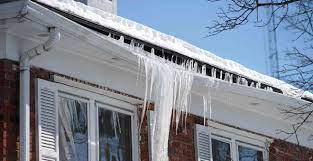 An ice dam can be a ridge of ice that forms at the puncture of a roof and prevents melting snow (water) from draining from the roof. Water backing up behind the dam can seep into a home and damage walls, ceilings, insulation and other areas.
An ice dam can be a ridge of ice that forms at the puncture of a roof and prevents melting snow (water) from draining from the roof. Water backing up behind the dam can seep into a home and damage walls, ceilings, insulation and other areas.
Moisture entering the home through ice dams can cause mold and mildew to expand. These can cause breathing problems. These dams prevent the growth of mold and mildew by immediately drying out wet or damp areas of the house.
Winter can bring another enemy to your roof. It is ice dams. These are accumulations of ice that always appear on the sides of roofs and can overflow into gutters. It is a common misconception that you can simply fix ice dams by repairing the shingles underneath. While shingle repairs may also be necessary, they do not address the underlying explanation for the ice dam.
Ice dams on roof
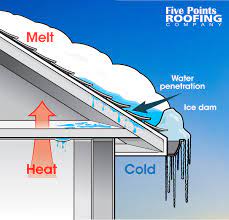 Ice dams form when the heat and humidity in your home cannot escape from the attic. Without proper ventilation, the roof is simply too hot. The snow that falls on the roof melts and therefore the resulting water runs down the roof.
Ice dams form when the heat and humidity in your home cannot escape from the attic. Without proper ventilation, the roof is simply too hot. The snow that falls on the roof melts and therefore the resulting water runs down the roof.
Before entering the gutters, the water reaches the coldest part of the roof, where it freezes. This ice buildup can put pressure on the shingles and even grow under the shingle sealer.
A properly installed ice and water protector can prevent water from entering your attic through ice dams, but it will not prevent ice dams from forming. If your roof is developing an ice dam, you should ask a roofing professional to make sure you have good roof ventilation and attic insulation.
Do not use home remedies, such as melting ice, as they will damage your roof. If the Ice Dam has already created a trail you should address it.
Can Tree Branches Damage a Roof?
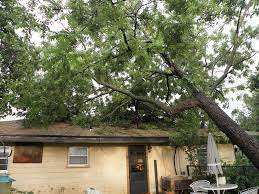 Whether you’ve just moved into a replacement property or have lived in a property for an extended period of time and are concerned about low tree branches, it’s important to understand the risks they pose to your roof.
Whether you’ve just moved into a replacement property or have lived in a property for an extended period of time and are concerned about low tree branches, it’s important to understand the risks they pose to your roof.
A low branch can easily damage your roof, whether it’s a large or light branch (light branches can expose the roof to rain and the elements just as much as heavy branches).
Not only can this affect the shingles and scratch the tiles, it can also cause clogged gutters from falling leaves. By scraping against the roof shingles, it can easily remove layers of asphalt that damage the integrity of the roof. Also, if the leaves start to clog in the gutters, various problems can arise.
From leaks to mold and deteriorating gutters, it opens up your roof to a multitude of problems. If there are high winds or a severe storm, branches can also fall and damage your roof or worse, they could get into your home causing extreme damage. It is recommended that tree branches be 8-10 feet away from a roof to ensure your roof remains protected.
